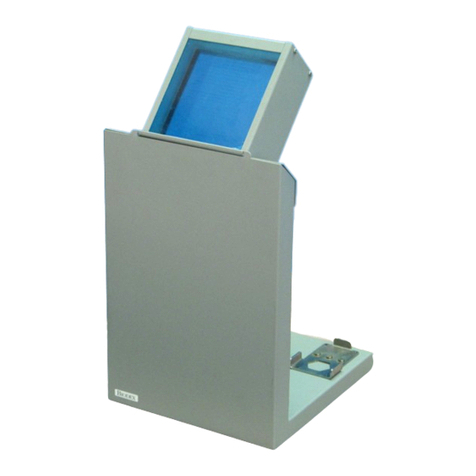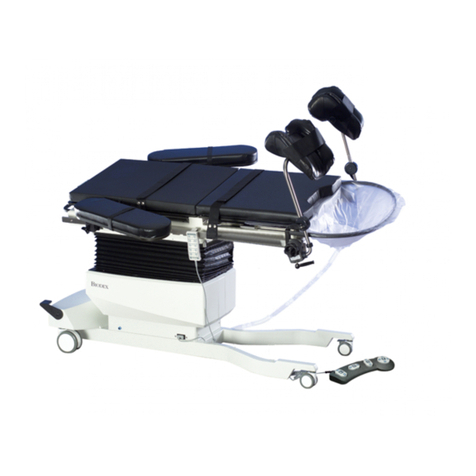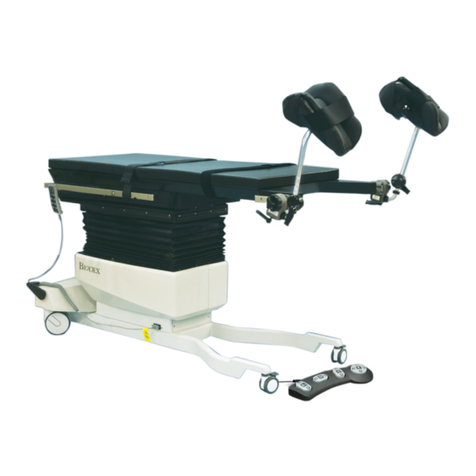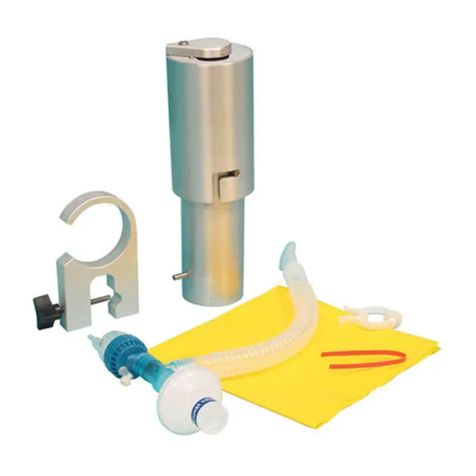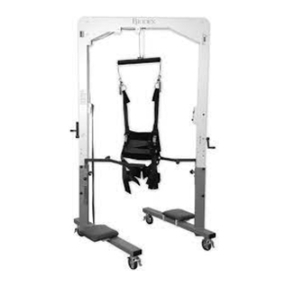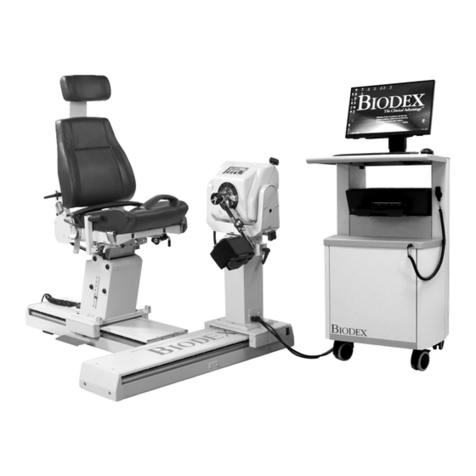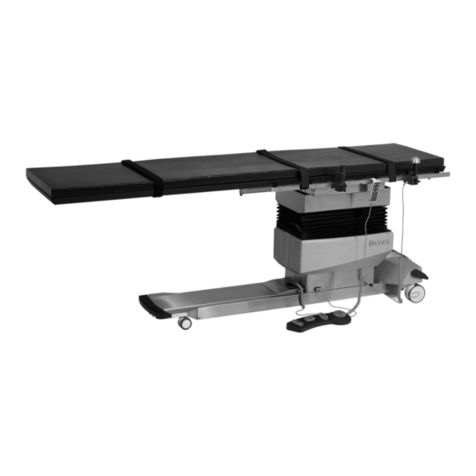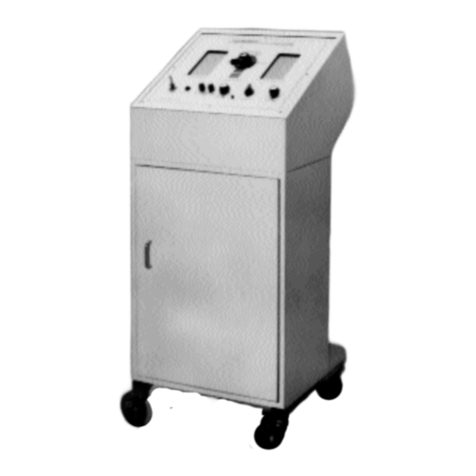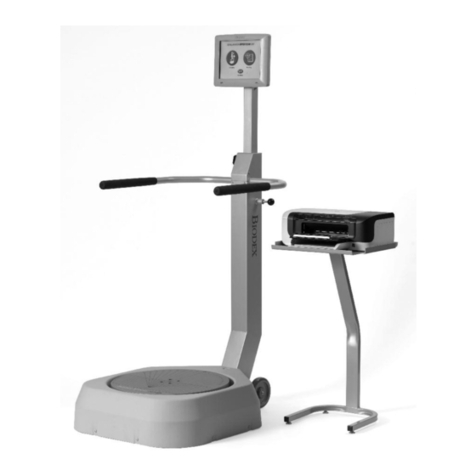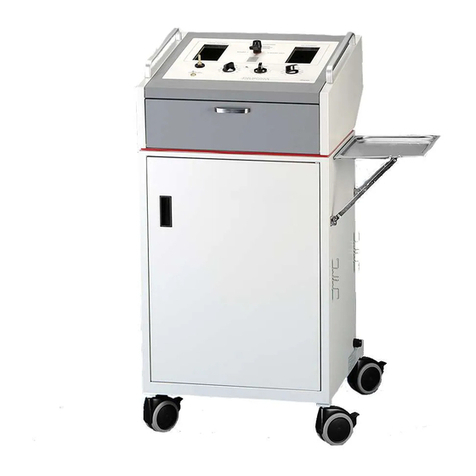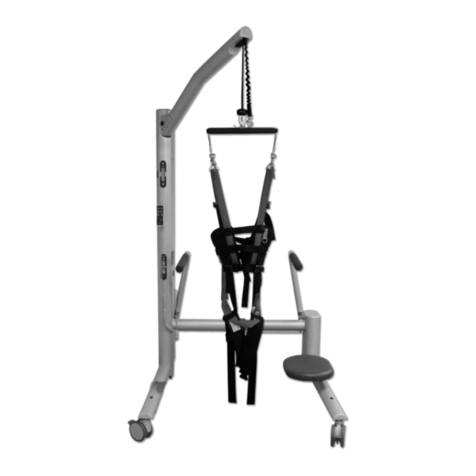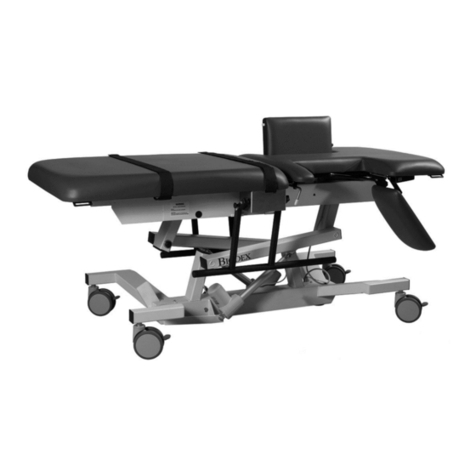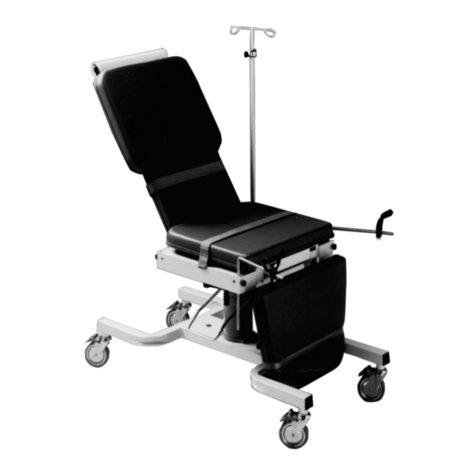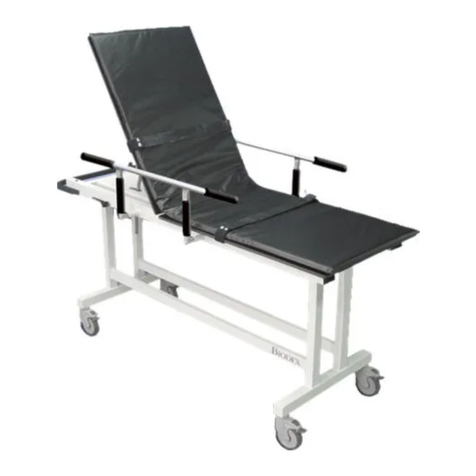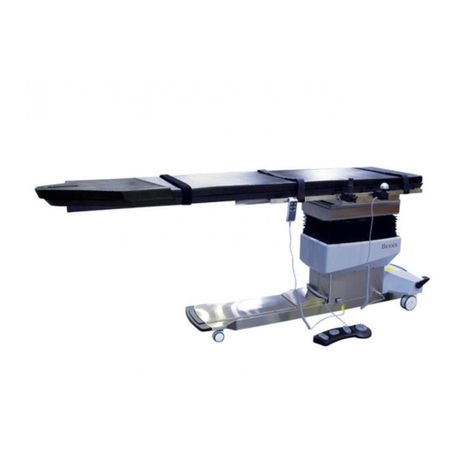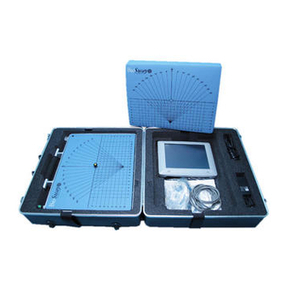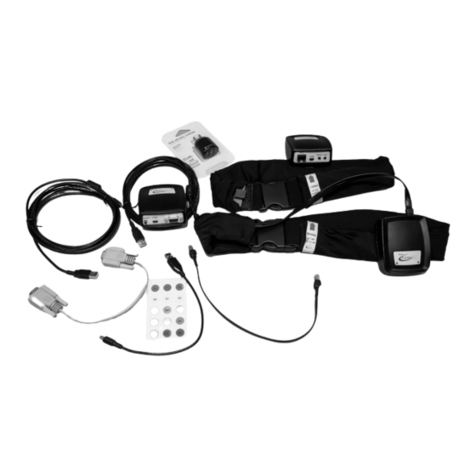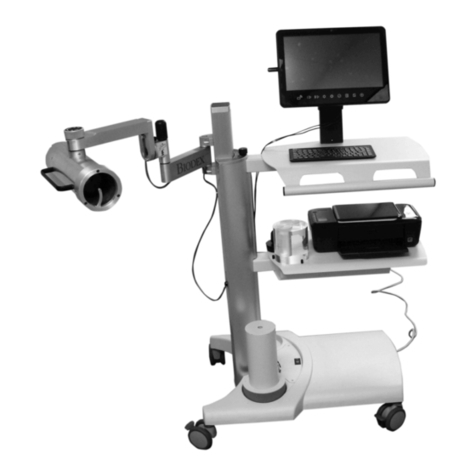16
NOTE: It is recommended that patients remove their glasses during testing or exercise with this
attachment.
1. Place controller in Setup mode and press <Standby>.
2. Holding back attachment support attachment firmly with one hand, press <ON>, press
<Start> to allow rotation of the dynamometer shaft. Use the dynamometer Balance
Adjustment Dial to balance the attachment in the vertical position. Move the support
attachment to about 50 degrees on attachment goniometer. Press <Stop> on the controller
or dynamometer to lock the support attachment in place.
3. Remove Lumbar Pad and insert Sacral Pad, with scale facing up, into Sacral Pad Receiving
Tube.
4. Ensure seat is in inclined position (front of seat tilted upward approximately 15°). If not, lift
up on seat until it locks into the proper position.
5. Seat patient. Move patient anteriorly or posteriorly to approximate longitudinal spinal axis
with the fixed axis of the Back Ex/Flex Attachment.
6. Position footrest so that it will not interfere with patient positioning.
7. Adjust patient axis height by pumping seat up or down using Seat Height Foot Pedal. Align
the fixed axis of the machine with the subject’s anterior superior ileac spines (ASIS’s). Half-
strokes move seat up. Full strokes held down lower seat. Note the value indicated on the
seat height scale so that it may be entered under subject settings.
8. Adjust Sacral Pad to provide desired firmness or maximum patient comfort. To do this,
loosen the Sacral Pad locking knob and slide the pad to that it is flush against the patient’s
sacrum.
9. Insert the Lower Extremity Compression Device into the receiving tube directly beneath the
center of the seat. The Compression Device Locking Knob should be on bottom with the
pads pointing up. Place the patient’s legs between the anterior and posterior pads and slide
the device in toward the chair until there is firm contact with the femur and the lower leg is
perpendicular to the supporting surface. Tighten the locking knob for the compression
device. Secure pelvic and femur straps.
10. Adjust Scapula Roll to rest between the level of the scapular spines and inferior angles. To
do this, press in simultaneously on the scapular pad adjustment knobs and slide the pad up
or down. Affirm that this is a comfortable position for the patient.
With the lower torso properly stabilized, the patient assumes a posterior pelvic tilt with a
slight degree of knee flexion. Maintenance of posterior pelvic tilt throughout the range of
motion places the extensor muscles in an elongated position which, when moving into a
flexion posture, allows exercise of a broader range of extensors.
11. If necessary, loosen the Headrest Adjustment Knobs and adjust the Cervical Headrest to
below the occipital protuberance, or to patient comfort.
12. Apply torso straps firmly and adjust clavicle pads on straps for maximum patient restraint
and comfort. Secure tethering strap across the patient’s chest.
The torso straps can also be crisscrossed over the chest by sliding one strap through the
slot on the cervical pad of the second strap. This is generally the most comfortable strap
arrangement for most patients. The torso straps can also be used independently on each
side. In either case, each strap is guided through the D-Ring on the appropriate side near




















